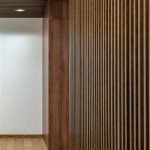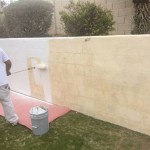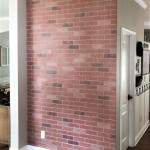Understanding R-Value for Interior Insulation: Walls and Ceilings
Insulation plays a crucial role in maintaining a comfortable and energy-efficient living environment. While exterior insulation is often the primary focus, insulating interior walls and ceilings can significantly contribute to sound dampening, temperature regulation between rooms, and overall energy conservation. The effectiveness of insulation is measured by its R-value, a term that indicates its resistance to heat flow. Choosing the appropriate R-value for interior walls and ceilings requires considering several factors, including climate, building codes, and specific performance goals.
R-value quantifies the thermal resistance of a material. A higher R-value indicates greater insulating power, meaning the material is more effective at preventing heat transfer. Different materials offer different R-values per inch of thickness. For example, fiberglass batts, a common insulation material, typically have an R-value of around 3.0 to 3.7 per inch, while rigid foam boards can range from R-4 to R-7 per inch or even higher depending on the type. Understanding these differences is essential for making informed decisions about insulation selection.
Building codes often dictate minimum R-values for exterior walls and ceilings to comply with energy efficiency standards. However, interior walls and ceilings are generally not subject to the same mandatory requirements. Consequently, the choice of R-value for these interior spaces is often discretionary and driven by the homeowner's or builder's specific needs and priorities.
Factors Influencing R-Value Selection for Interior Walls
Several factors influence the optimal R-value for interior wall insulation. These considerations go beyond simple code compliance and delve into the specific goals for the space being insulated. Assessing these factors will aid in determining the most effective and economical insulation strategy.
One key factor is sound control. Interior walls separating bedrooms, bathrooms, or home offices often benefit from insulation to minimize noise transmission. Insulation helps to dampen sound waves, creating a more peaceful and private environment. For soundproofing, the density and composition of the insulation material are as important as the R-value. Dense materials like mineral wool or specialized soundproofing insulation boards are particularly effective at reducing sound transmission, even at relatively lower R-values compared to fiberglass batts. Consideration should be given to flanking paths of sound transmission as well, such as through doorways or electrical outlets, and these areas should be addressed concurrently with the insulation installation.
Another significant factor is temperature regulation between rooms. If some rooms tend to be cooler or warmer than others, insulating the interior walls can help to even out the temperature disparities. This can reduce the strain on the HVAC system and improve overall comfort. For instance, insulating the walls of a sunroom or a room above a garage can help to maintain a more consistent temperature, preventing excessive heat gain in the summer or heat loss in the winter. In such cases, a moderate R-value, such as R-13 or R-15, may suffice. The heating and cooling loads of adjacent rooms should be considered when determining the appropriate R-value.
Finally, the type of wall construction also influences R-value selection. Walls with standard 2x4 studs have less space for insulation than walls with 2x6 studs. This limitation affects the maximum R-value that can be achieved. A 2x4 wall typically accommodates insulation with an R-value of around R-13, while a 2x6 wall can accommodate insulation with an R-value of around R-19 or R-21. The choice of insulation material should be compatible with the wall cavity depth. Using compressed insulation in a smaller wall cavity will decrease its effectiveness.
Determining R-Value for Interior Ceilings
Insulating interior ceilings, particularly those separating living spaces from unheated attics or garages, can significantly impact energy efficiency. The R-value selection for these ceilings is influenced by factors similar to those for exterior ceilings, though often to a lesser extent. The primary goal is to minimize heat transfer between the conditioned space and the unconditioned area above.
The most critical factor is the climate. In colder climates, a higher R-value is generally recommended to prevent heat loss through the ceiling. Conversely, in warmer climates, a higher R-value helps to prevent heat gain. The U.S. Department of Energy provides climate zone maps and recommended R-values for ceilings based on geographic location. While these recommendations are primarily for exterior ceilings, they can serve as a starting point for determining appropriate R-values for interior ceilings. For example, in a cold climate, an interior ceiling separating a living space from an unheated attic might benefit from an R-value of R-30 or higher. In milder climates, a lower R-value, such as R-19 or R-25, may be sufficient.
Another important consideration is the accessibility of the ceiling space. Attics that are easily accessible allow for the installation of loose-fill insulation, such as blown-in fiberglass or cellulose. These materials can conform to irregular shapes and fill gaps effectively, making them a good choice for adding insulation to existing ceilings. Attics with limited access may require the use of batts or rigid foam boards. The ease of installation and the potential for air leakage should be considered when choosing an insulation material.
The presence of HVAC equipment in the attic also influences R-value selection. If ductwork or other HVAC components are located in the attic, insulating the ceiling can help to reduce energy losses from these systems. In such cases, a higher R-value is generally recommended. Furthermore, the ducts themselves should be properly insulated to maximize efficiency. Consideration should also be given to potential condensation issues, particularly in humid climates, and appropriate vapor barriers should be installed.
Insulation Materials and Their R-Values
The choice of insulation material plays a significant role in determining the overall R-value of the insulated area. Different materials offer varying R-values per inch, and each has its own advantages and disadvantages. Understanding these characteristics is crucial for making informed decisions.
Fiberglass batts are a common and relatively inexpensive insulation material. They are easy to install and are available in a range of R-values. Fiberglass batts typically have an R-value of around 3.0 to 3.7 per inch. They are best suited for standard wall and ceiling cavities and are not particularly effective at air sealing. Careful installation is important to avoid gaps or compressions, which can reduce their effectiveness.
Cellulose insulation is made from recycled paper and is treated with fire retardants. It is available in loose-fill and blown-in forms. Cellulose provides excellent air sealing properties and has an R-value of around 3.5 to 3.7 per inch. It is a good choice for filling irregular cavities and is considered an environmentally friendly option. However, it can settle over time, which may reduce its R-value.
Mineral wool, also known as rock wool or slag wool, is made from molten rock or slag spun into fibers. It is denser than fiberglass and offers excellent soundproofing and fire resistance. Mineral wool typically has an R-value of around 3.0 to 3.3 per inch. It is resistant to moisture and mold growth and is a good choice for applications where sound control is a priority.
Rigid foam boards are available in various types, including polystyrene (EPS), extruded polystyrene (XPS), and polyisocyanurate (polyiso). These boards offer high R-values per inch, ranging from R-4 to R-7 or higher depending on the type. They are resistant to moisture and can provide excellent thermal performance. Rigid foam boards are often used in exterior wall and ceiling applications but can also be used in interior spaces, especially where space is limited.
Spray foam insulation is available in two types: open-cell and closed-cell. Open-cell spray foam has a lower R-value of around 3.5 to 3.7 per inch and provides good air sealing. Closed-cell spray foam has a higher R-value of around 6.0 to 6.5 per inch and offers excellent air and moisture barriers. Spray foam insulation is effective at filling irregular cavities and can provide superior thermal performance. However, it is generally more expensive than other insulation materials and requires professional installation.
Ultimately, selecting the appropriate R-value for interior walls and ceilings is a multifaceted decision that necessitates careful consideration of factors such as climate, construction type, and specific performance objectives. A thorough assessment of these elements will empower informed decisions that optimize energy efficiency, sound control, and overall comfort within the living space.

What R Value Do I Need Johns Manville

Insulation R Values Chart And Buyer Guide

Insulation Levels For Cold Hot And Moderate Climates

R Value Insulation

The Importance Of Insulation R Values Eco Spray

Insulation R Values And Cavity Depths

All About Insulation R Values The Home Depot

Where To Insulate In A Home Department Of Energy

Insulation Yourhome

Recommended Insulation Levels For Optimum R Value
Related Posts








